- Like
- SHARE
- Digg
- Del
- Tumblr
- VKontakte
- Flattr
- Buffer
- Love This
- Save
- Odnoklassniki
- Meneame
- Blogger
- Amazon
- Yahoo Mail
- Gmail
- AOL
- Newsvine
- HackerNews
- Evernote
- MySpace
- Mail.ru
- Viadeo
- Line
- Comments
- Yummly
- SMS
- Viber
- Telegram
- JOIN
- Skype
- Facebook Messenger
- Kakao
- LiveJournal
- Yammer
- Edgar
- Fintel
- Mix
- Instapaper
- Copy Link
All About Personal Trainer Fitness Assessment Results
Everyone who initially signs up for sessions and begins exercising with a personal trainer has goals in mind which they intend to accomplish. Assessing your individual goals is crucial for the personal trainer to set up a proper training program.
Fitness Assessment Results: Pre-Training Fitness Assessments
When you first begin exercising with a personal trainer, they will attempt to assess your level of fitness as thoroughly as possible by using the 5 components of fitness. If you would like to review these 5 components of fitness, read our article on the 5 Components of Physical Fitness.
Body Composition
Body composition is something which almost all personal trainers assess before working with a client. Body composition analysis is an important part of your fitness assessment because it shows how much fat you carry on your body in relation to your muscle mass.
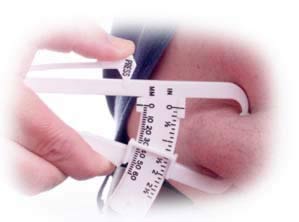 You can request a body composition analysis if your personal trainer doesn’t suggest one right away. There are various ways to assess body composition. The most common is through skinfold analysis.
You can request a body composition analysis if your personal trainer doesn’t suggest one right away. There are various ways to assess body composition. The most common is through skinfold analysis.
Folds of your skin are measured with calipers in as few as 3 to as many as 9 areas of your body. The measurements are plugged into an equation which estimate your body fat percentage with excellent accuracy. Learn more about Body Fat Measurement.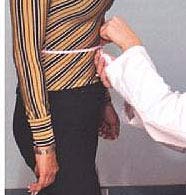
In addition to or in place of body fat testing, your personal trainer will also take circumferences of various body parts with a soft measuring tape.
Common circumferences which personal trainers take in the initial fitness assessment are the neck, chest, arms, forearms, waist, hip, thighs, and calves. There are also equations which allow you to estimate body fat percentage using circumferences, but skinfold analysis tends to be more accurate.
Body composition can also be assessed with a “before picture.” Your personal trainer may ask if you would like a picture before you start training. If they do not ask you, you can take your picture on your own. Try to show as much skin as possible so you can really tell if your training program is giving you the body composition results you want.
Cardiovascular Endurance
There are various ways your personal trainer may assess your cardiovascular fitness. At the beginning of your training, your personal trainer can simply observe how you physically react to various physical activities or have you perform specific tests which are designed to gauge cardiovascular endurance.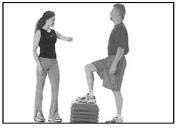
A common cardiovascular endurance test is the 3-minute YMCA step test. This test involves simply stepping up and down a 12 inch step for 3 minutes.
Your cardiovascular fitness assessment results are determined by your heart rate recovery in the minute following your 3-minutes of stepping.
 While the YMCA step test is a decent way to assess your cardiovascular fitness, there are easier ways. With the advancement of today’s cardio equipment, you can usually perform cardiovascular fitness assessments which are programmed into the cardio machines.
While the YMCA step test is a decent way to assess your cardiovascular fitness, there are easier ways. With the advancement of today’s cardio equipment, you can usually perform cardiovascular fitness assessments which are programmed into the cardio machines.
LifeFitness brand cardio machines have a “Fit Test” which is a 5 minute sub maximal graded exercise test (GXT) which estimates your VO2 max. The VO2 max is a clinical measurement of how efficiently your body can use oxygen during aerobic exercise.
If your personal trainer has access to a cardio machine with a fit test, expect to hold onto the cardio machine which monitors your heart rate for around 5 minutes as the machine calculates an estimate of your cardiovascular fitness based on the information about yourself you enter at the beginning and end of the exercise.
Muscular Strength & Endurance
 There are many ways to initially determine your muscular strength and endurance. The most common way for personal trainers to determine your fitness assessment results for muscular endurance is to count how many push-ups and/or sit-ups and other basic exercises you can do in an allotted period of time.
There are many ways to initially determine your muscular strength and endurance. The most common way for personal trainers to determine your fitness assessment results for muscular endurance is to count how many push-ups and/or sit-ups and other basic exercises you can do in an allotted period of time.
Most personal trainers will use exercises which focus on muscular endurance at first as they will allow the trainer to estimate muscular strength. How you respond to your initial muscular strength and endurance exercises will largely determine how your trainer will plan your training sessions at the beginning of training.
Flexibility
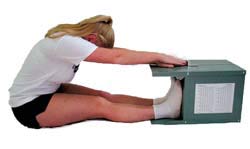 Your fitness assessment results for flexibility used to be (and still may) be determined by how far you could reach your fingers forward on the archaic sit & reach box. For the old sit & reach, you were told to remove your shoes and sit on the floor, usually without even warming up first.
Your fitness assessment results for flexibility used to be (and still may) be determined by how far you could reach your fingers forward on the archaic sit & reach box. For the old sit & reach, you were told to remove your shoes and sit on the floor, usually without even warming up first.
The instructor usually told you to take a deep breath and reach your fingers as far forward as you can along a ruler or yard stick. This test was supposed to determine your flexibility fitness assessment results, but in fact, it cannot tell the whole story.
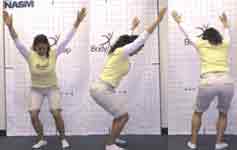 Today, many personal trainers and all NASM-certified fitness professionals are educated at performing dynamic posture assessments.
Today, many personal trainers and all NASM-certified fitness professionals are educated at performing dynamic posture assessments.
Dynamic posture assessments not only assess dynamic posture, but also flexibility of your muscles during functional movements.
Your personal trainer will have you perform various functional movements such as squats, lunges, push-ups, and even just walking to observe how your body responds to each exercise.
Your flexibility fitness assessment results will be determined by how efficiently your body can perform the actions. For example, if your hips shift dramatically towards the right during a squat (picture above) it is strong evidence that certain muscles lack flexibility while others may have excess flexibility.
Reassessments During Personal Training: Results
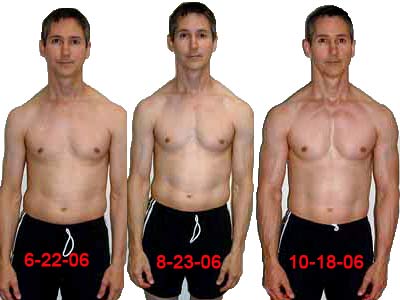
As you progress through your exercise program, your personal trainer will reassess all of the initial fitness assessments.
Every so often, usually at 3-4 week intervals, your personal trainer will have you go through some of the exact fitness assessments you went through at the beginning of training.
The personal trainer should provide you with input about how you are progressing by showing you the fitness assessment results via numbers or letting you know through their observations.
Determining your fitness assessment results is often an ongoing process if you’re working with a personal trainer. Communication between personal trainer and client is very important, so if your personal trainer isn’t making your results clear, make sure to ask about it.
What Results Are Most Likely?
Results vary from person to person, but the human body has a fairly predictable response to physical training. If you do everything which your trainer requests, it is very likely you will succeed in achieving your goals in the desired time frame which you discussed with your personal trainer.
Basic Results Timeline
- In the first 30 days of training, you will FEEL the difference.
- In the second 30 Days of training, you will be able to SEE the difference.
- For 60 days and beyond, your coworkers, family, & friends will see the difference.
Detailed Results Timeline
1-30 Days
During the first 30 days, you will notice your cardiovascular endurance, muscular endurance, and muscular strength rapidly increase as your body adapts from an untrained state. This is especially the case if you haven’t exercised regularly in a while.
If improving flexibility was one of your primary goals and you have been working on it, expect it to improve slowly. While you will feel like you have more energy and are getting in shape, your body composition is not likely to change in the first month of training because your body adapts neurologically first.
30-60 Days
During the second month of training, you will continue to make improvements in your cardiovascular endurance as well as make muscular strength and endurance gains. Although the gains won’t be as rapid as the first month, your personal trainer should be adjusting your program to avoid plateau so you can keep progressing.
During the second month of training, you can expect your body composition to slowly begin to improve provided you have been eating correctly and doing the prescribed exercise during the training sessions and on your own time. Your flexibility will slowly improve as long as you keep working on it by stretching the specific muscles you want to become more flexible.
90+ Days
If you maintain your regular exercise with a personal trainer and exercise on your own time, you can expect your body composition to continually improve. From 90 days and beyond, you are considered to be in a trained state. Thus, improving your fitness assessment results for muscular strength & endurance as well as cardiovascular endurance will gradually become more difficult.
If you have been working on flexibility you will start making noticeable progress. Your muscles will feel less tense and you will notice an increase in your joints’ range of motion.
The Most Important Thing to Keep in Mind: Persistence Pays Off
Achieving results through a fitness program will never be an overnight process. If you are exercising with a personal trainer, if you putt in exercise on your own time and attempt to eat right, results will come in time.
What Fitness Assessment Results Tell Personal Trainers
If the Exercise Program is Sufficient or Not
If you have been training for 20 training sessions and you can still only do 4 push-ups, the personal trainer will know that they need to modify the training sessions. Based on your initial fitness assessments, you personal trainer will be able to see what is working and what is not and adjust your workouts accordingly.
Whether You are Doing Any Exercise in Addition to the Training Sessions
Especially with people who are trying to tone up or lose weight, additional exercise outside of personal training sessions is absolutely necessary to create the caloric deficit needed to achieve weight and fat loss. If your fitness reassessments show you’re not on the road to achieve your goal, it may be a sign that your workouts on your own time are either insufficient or that you’re just not doing them!
Whether Your Current Diet is Adequate
Your body composition assessment results will often tell the personal trainer a lot more about your diet than physical training. This is yet another reason why it is important to take accurate body composition assessments before and during training.
For example, say you lost 10 pounds on the scale after 2 months of training. According to your body composition assessment, you lost 8 pounds of muscle and only 2 pounds of fat.
This would tell the trainer that you are most likely not eating enough calories and/or protein to maintain your muscle mass during the training. In this case, your 10 pounds of weight loss is not only going to be harder to maintain, but you will likely regain the weight because losing muscle slows down your metabolism.
What Fitness Assessment Results Tell You as a Client
 Hiring a personal trainer has never been the cure-all for all your physical fitness problems.
Hiring a personal trainer has never been the cure-all for all your physical fitness problems.
Unless your fitness goals are very short-term and quickly obtainable, you should expect to put in a significant amount of work to achieve them.
If you are not happy with your fitness assessment results from personal training or your own exercise program ask yourself the following questions:
Has My Diet Been Consistent with My Goals?
Have you been following a diet designed by a professional dietitian? Have you followed your personal trainer’s basic diet suggestions? Have you resisted all temptations which are not consistent with your goals?
Did I Do All the Exercise I Was Supposed to Do?
Did you do everything your personal trainer asked of you? Did you do the cardio on your own time that your personal trainer asked you to do?
Have I Been Working Out Hard Enough?
When you do exercise on your own or with your personal trainer, are you giving it your all? Have you been giving 100% for each set and rep of weight training exercise and pushing yourself while doing cardio?
Am I Dissatisfied With My Personal Trainer?
Do you feel like your exercise program is consistent with your goals? Do you feel your personal trainer has not done the job you expected of them? Do you feel your personal trainer has given you the best service they have to offer?
If You Answered YES to the 4 Questions Above, Maybe it is Time to Find Another Personal Trainer
If You Answered NO to any of the 4 Questions Above, Maybe You Need to Put in More Effort
Setting Fitness Goals & Training Budget
Schedule Personal Training Consultations
Exercising with a Personal Trainer
More Information About Assessing and Reassessing Your Physical Fitness Assessment
- Health and Fitness Self Assessment
Learn how to check your Body Mass Index or BMI, pulse/resting heart rate, blood pressure, waist circumference and more in the comfort and privacy of your own home. - Posture Problems
Results of your fitness assessments should show improved muscle balance and posture as you keep exercising with a personal trainer. Step into the not-so-simple world of functional anatomy, muscle balance, and kinesiology to discover how your posture problems may be holding you back. - Physical Fitness
Learn about all the different ways you can improve your fitness assessment results. Which of the 4 components of fitness do you need focus on improving?
About Michael Behnken
Mike Behnken is a personal trainer who holds multiple NASM certifications and a MS in Exercise Science. Mike loves fitness, travel, and photography among many other interests.

